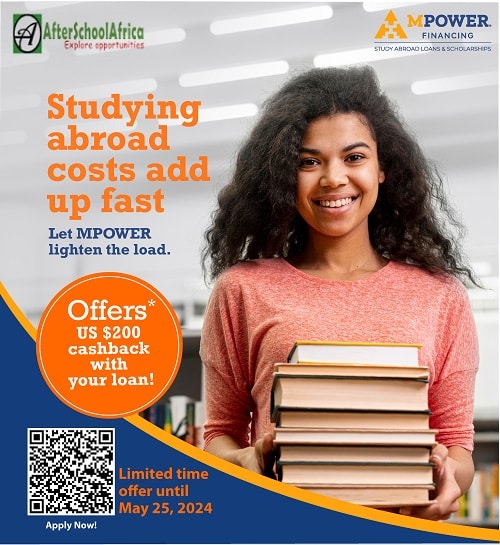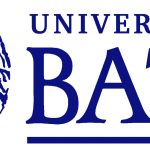The cost, timeline, and application process for the M-1 student visa
Table of Contents
What is an M-1 student visa?
The M-1 student visa allows an international student to study full-time at a technical, vocational, or other nonacademic program in the United States.
The M-1 visa and the F-1 visa are comparable in terms of application procedures and eligibility. The F-1 visa is intended for non-citizens who want to enroll full-time in academic or language programs at universities, seminaries, high schools, or conservatories.
We will go over the procedure for acquiring an M-1 visa in this article.
Cost
You must pay an application fee of $185 and a $330 SEVIS I-901 charge to apply for an M-1 student visa. After your visa is approved, you could additionally be required to pay an issuance fee (sometimes known as a reciprocity charge), depending on the nation where you are submitting your application.
Check if you qualify for an M-1 student visa by checking your eligibility.
Timeline
Appointment wait periods will differ depending on the country in which you are applying, just like with the J-1 visa. At the time of writing, the wait period in Tokyo is merely 3 days; however, in London, you should expect to wait 14 days. For up-to-date wait times, check out the U.S. Department of State’s “Visa Appointment Wait Times” tool.
Note:
Only 365 days prior to the start date of a course of study may an M-1 visa be granted. The State Department extended it in February 2023 from the previous 120-day period. After this commencement date, you will only be permitted to enter the US for a maximum of 30 days.
M-1 Visa Requirements
To be eligible to apply for an M-1 visa, you have to meet the following requirements:
- You have to be enrolled full-time in a program that isn’t academic, such as a vocational school.
- You must be enrolled in English-language classes or possess a high degree of skill in the language.
- You have to be able to support yourself during your visit.
- You need to live outside of the United States.
- Your program must be approved by the Student and Exchange Visitors Program (SEVP).
Keep in mind that you must be enrolled in a vocational program (or another non-academic one) before you can apply for the M-1 visa. After being admitted into such a program, you can move on to the application procedure, which is covered in the section after this one.
How to apply
Your details will be added to the database once you’ve successfully enrolled in a program approved by the Student and Exchange Visitor Information System (SEVIS). At that moment, the SEVIS I-901 cost will have to be paid. Form I-20, officially known as the “Certificate of Eligibility for Nonimmigrant Student Status,” should arrive after your SEVIS registration. You must bring this document with you to your visa interview. You may now apply for an M-1 visa at the American embassy or consulate in your area after completing these preliminary procedures.
Filing the Application
Every embassy has slightly different rules governing the M-1 visa application process, so be sure to check the website of your local U.S. Embassy or consulate. To begin with, you will need to fill out Form DS-160 (officially called “Online Nonimmigrant Visa Application”), which will require you to upload a photograph satisfying the State Department’s regulations. When you’re done, make sure to print off the confirmation page because you’ll need it for the interview.
You must make an appointment for an interview at a U.S. Embassy or consulate in your home country unless you are under 13 or older than 80. Although it is technically possible, applying from another nation may lead to a somewhat drawn-out application process.
How to Prepare for the Interview
Before your interview, you might have to pay an application fee of $160, depending on the embassy. Additionally, make sure to obtain the following supplies:
- Both you and a representative from your study program must sign Form I-20. A Form I-120 should also be sent to your spouse and any dependents involved.
- A passport that will expire six months from the planned arrival date. Each family member whose name appears on the passport must apply separately.
- Page of confirmation for Form DS-160.
- A photo that satisfies the State Department’s requirements — that is if you’re unable to upload the photo while completing Form DS-160.
- A receipt for the application fee (if applicable).
It is possible that further documentation, such as proof of your academic credentials, will be requested from you. In light of that, you ought to bring:
- The results of the standardized tests that the American vocational program requires
- Transcripts, degrees, diplomas, and other credentials from prior educational institutions
- Any proof that you will be able to cover living, travel, and educational expenses
- Evidence that you intend to depart the United States at the conclusion of the program
Note:
The only time you will have to pay issuance fees is if your visa is granted (and only if the country you are applying to requires them).
Going to the Interview
The consular official will question you during the interview to find out if you meet the requirements for the M-1 student visa. The officer may capture digital fingerprints during the interview; however, not all embassies do this. Depending on where you live, you might have to pay an issuance fee if your visa is granted.
Additional administrative procedures can be needed in some circumstances. If that is the case, you will be informed by the officer. It might also be necessary for you to arrange for the return of your belongings.
It will be necessary for you to enter the United States with your passport, Form I-20, and M-1 visa. Recall that admittance into the nation is not guaranteed just because you have a visa. In the end, the U.S. Customs and Border Protection (CBP) agent gets to make this judgment. The agent will stamp your passport or provide you with a Form I-94, also called an Arrival/Departure Record, if you are allowed entry.
FAQ
Can I work during my stay?
Yes, but only under specific conditions. The work needs to be completed once your course load is over and it needs to be part of a practical training program. You are limited to six months of employment, and you have to file for an Employment Authorization Document (EAD) before you may start working.
You will be required to fill out Form I-9, which is formally called “Employment Eligibility Verification,” if you are hired. The EAD information is required to be included in Section 2 of that form.
Note:
Dependents on M-2 are not allowed to work on this visa.
Can I enroll in school if I’m in the United States on another nonimmigrant visa?
Depending on the type of visa. For example, holders of B-1/B-2 visas are not allowed to enroll in school. However, as long as they continue to meet the conditions of their current visa, holders of E visas are allowed. You must first convert your status to M-1 if your nonimmigrant status keeps you from enrolling. You would probably be in violation if you didn’t do this, in which case you couldn’t extend your stay or convert your status to M-1.
Is there any way to enter the United States more than 30 days before my start date?
It is very forbidden for you to enter the nation with an M-1 visa any earlier than 30 days before your start date. Having said that, if you would like to enter the nation earlier, you can apply for a B visa. After arriving in the US, you will need to petition for a change of status to an M-1 student visa, which may take longer to process than expected. You will not be allowed to begin your program until you receive M-1 status, under any circumstances. As an alternative, you might use your M-1 student visa to enter the United States again after returning to your home nation.
Read Also:
F1 Visa Interview Questions and Answers?
How to Get a UK Visa without Travel Agents
Canada Visa Lottery – What you need to know









